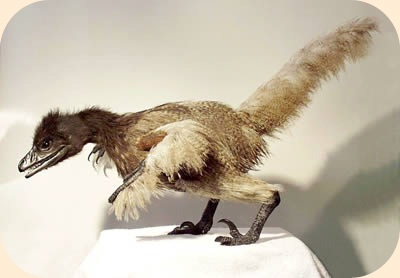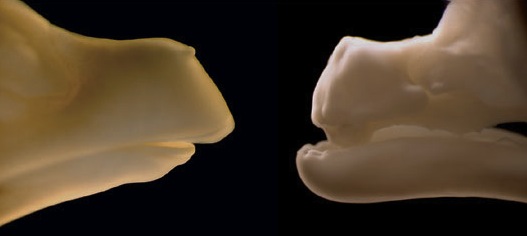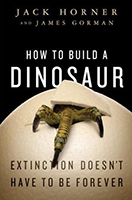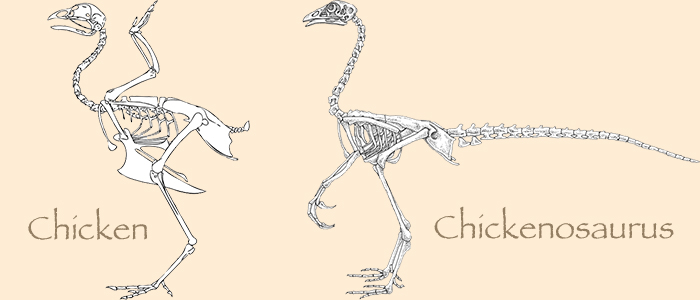






 EVO-DEVO HIGHLIGHTS 
|
Like an evolutionary proof of concept, scientists are reverse engineering chicken embryos to express ancient genes. These conserved genes, or atavisms, still exist in modern day birds. In essence, chickens and other birds possess the instructions for making a dinosaur. Hans Larsson (McGill University), Matthew Harris (Max Planck Institute), and John Fallon (University of Wisconsin) are at the forefront of this research, using genetic engineering and other technologies to turn on and off genetic "switches" and induce expression of atavistic traits. We now have chicken embryos with teeth, longer vertebrae comparable to that of archaeopteryx, and the knowledge to turn feathers back into scales. Paleontologists already know that some, perhaps many, dinosaurs had feathers. One archaeopteryx specimen produced the best-known fossil in history, with visible feathers imprinting the stone. Evolutionary biologists still aren't quite sure how flight evolved, but there are at least a few strong theories. By further exploring the evo-devo of modern birds, we not only move closer to a living dinosaur, but we learn a great deal about evolution as well. 
Bambiraptor model showing abundant feathers. Feathers likely began as a way for small flightless dinosaurs like sinosauropteryx to gain a hunting advantage - longer strides meant faster movement using less energy. |
|
CTV News - Hans Larsson |
Jack Horner Building a Dinosaur from a Chicken |
Hans Larsson's Workspace McGill University |
CBS News - Evo-Devo |
CBS News Turning Chickens Into Dinosaurs |
|
| |

Normal chicken embryo (left) and talpid chicken mutant embryo showing tooth development (right). Read the full journal article here: | |
 |
How to Build a Dinosaur
In his new book, Jack Horner separates fact from fiction and offers an optimistic view of the developing fields of evo-devo and paleontology. You will walk through the individual steps necessary to turn a chicken into a dinosaur, all the while learning a greal deal about developmental biology and evolution. A nice backstory about Horner's paleontological experiences, with an in-depth look at his quest toward creating a chickenosaurus. |

 | |